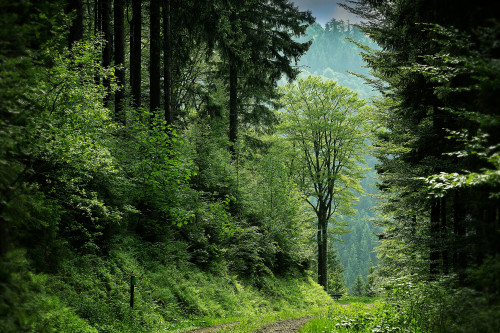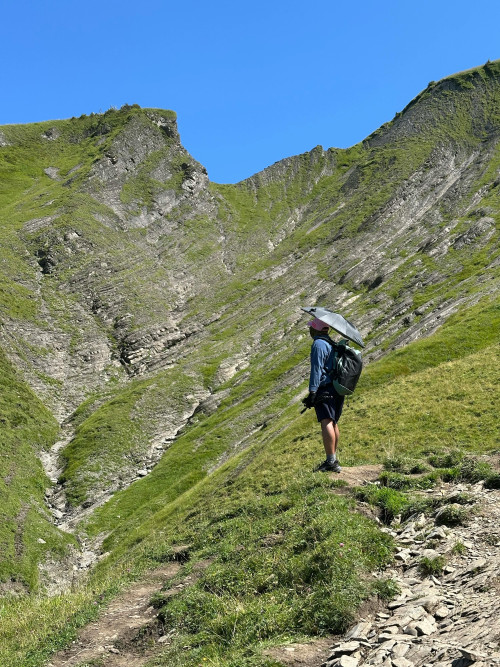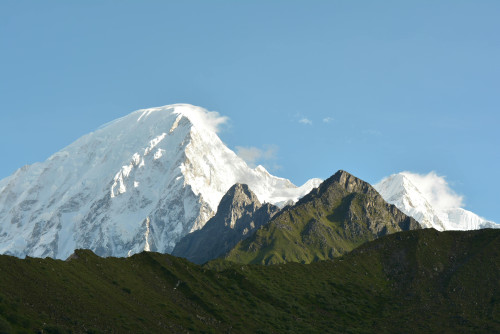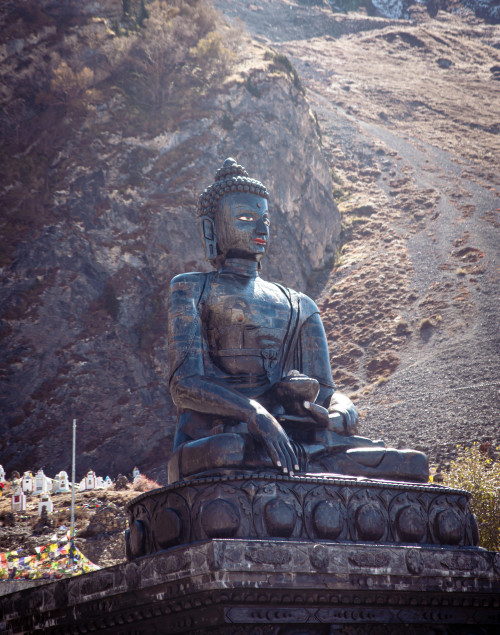9th Oct, 2025
Green Treks: How We Keep the Himalayas Clean
- Magnificent Himalayan Treks
The Himalayas, sometimes known as the "Roof of the World," are a spectacular range of mountains. It spans five countries: India, Nepal, Bhutan, China, and Pakistan. These towering peaks, which include iconic summits such as Mount Everest, Kanchenjunga, and Annapurna. They are not only a shelter for adventurers and spiritual seekers, but also an important ecological zone. The Himalayan ecology maintains unique species, provides water to millions through its rivers, and has deep cultural value.
However, the growing popularity of trekking, mountaineering, and tourism has posed severe environmental challenges in this pristine region. Green Treks, a sustainable tourism program, is leading the charge to preserve the Himalayas' natural beauty. It preserves through collaborative efforts to maintain the region clean.
This article examines Green Treks' mission, techniques, and impact on the Himalayan ecosystem.
Table of Contents
The Environmental Crisis in the Himalayas
The Himalayas have always attracted trekkers, climbers, and environment lovers. Every year, thousands of people travel prominent routes such as Everest Base Camp, the Annapurna Circuit, and Langtang Valley.
While tourism has boosted local economies, it has also caused environmental degradation. The most pressing issues are:
Litter and Waste Accumulation:
Trekkers and climbers frequently leave behind plastic wrappers, food containers, and camping equipment. In isolated places with little or nonexistent waste disposal infrastructure, litter accumulates, fouling paths, rivers, and campsites.
Deforestation and Resource Depletion:
The demand for firewood for cooking and heating in teahouses and campsites has resulted in deforestation in some locations, endangering sensitive ecosystems and causing soil erosion.
Water Contamination:
Improper trash disposal, including human waste, has contaminated water supplies, endangering wildlife and humans downstream.
Impact on Wildlife:
Litter and habitat disruption have an impact on the region's biodiversity, which includes species such as the snow leopard, Himalayan tahr, and a variety of rare birds.
These challenges jeopardize not only the Himalayas' natural beauty, but also the livelihoods of local communities that rely on tourism and the ecosystem to survive.
Recognizing this, Green Treks was founded to solve these challenges through environmentally friendly techniques and community involvement.
The Birth of Green Treks
Green Treks began as a grassroots effort by a group of dedicated trekkers, environmentalists, and Himalayan communities who saw the deterioration of their beloved mountains.
The effort, launched in 2015, intended to integrate adventure tourism with environmental care, ensuring that the Himalayas remain a pristine destination for future generations.
Green Treks' primary objective is to encourage environmentally friendly trekking practices, increase awareness about environmental issues, and engage local people in conservation initiatives.
The organization operates under the premise that tourism and environmental preservation can coexist. Green Treks has established itself as a paradigm for sustainable adventure tourism by educating trekkers, training guides, and working with local governments.
Its activities are focused on three main areas: trash management, community empowerment, and environmental education.
Strategies for Keeping the Himalayas Clean
Green Treks takes a holistic approach to addressing the environmental concerns confronting the Himalayas. The following are the primary strategies that have made the initiative successful:
Waste Management and Clean-Up Drives
One of Green Treks' most obvious impacts is its waste management programs. The organization organizes frequent clean-up drives along major trekking routes, bringing together volunteers, trekkers, and local communities to collect rubbish.
These drives have collected tons of plastic, metal, and organic debris from trails, campgrounds, and high-altitude areas.
To address garbage at the source, Green Treks implemented the "Pack In, Pack Out" policy, which encourages trekkers to return all waste to specified disposal stations.
The initiative also works with local authorities to build rubbish collection and recycling centers in popular trekking destinations including as Lukla, Namche Bazaar, and Manang. In regions where recycling is not possible,
Green Treks pioneered trash segregation methods to assure correct disposal while minimizing environmental impact.
Green Treks collaborates with mountaineering teams on high-altitude trips to Everest Base Camp to ensure that all equipment, including oxygen cylinders and climbing gear, is safely returned. In addition, the organization encourages trekkers and tour operators to utilize biodegradable packaging and avoid single-use plastics.
Sustainable Trekking Practices
-
Green Treks promotes sustainable trekking practices that reduce environmental effect. This includes:
Eco-Friendly Camping:
Trekkers are encouraged to utilize designated campsites to avoid hurting the environment. Green Treks encourages the use of portable stoves rather than firewood to avoid deforestation.
Low-Impact Trails:
The organization works with local governments to preserve and construct pathways that prevent soil erosion and habitat destruction. To protect sensitive environments, hikers are taught to stick to designated paths.
Water Conservation:
Green Treks encourages the use of water purification tablets and reusable bottles to reduce plastic waste and prevent pollution of water supplies.
By incorporating these principles into hiking culture, Green Treks assures that adventure tourism has a low environmental impact.
Community Empowerment and Livelihood Support
Green Treks' mission centers around local communities. The effort believes that active participation by Himalayan residents is required for long-term conservation success.
To that end, Green Treks educates local guides, porters, and teahouse owners about environmentally friendly practices such as waste separation, energy-efficient cooking, and sustainable hospitality.
The group also encourages community-led micro-enterprises, such as eco-lodges and trash recycling units, to create alternative livelihoods while supporting environmental conservation.
For example, in the Annapurna region, Green Treks has assisted in the establishment of solar-powered teahouses, lowering dependency on firewood and increasing energy efficiency.
Green Treks promotes the sustainability and economic viability of conservation projects by empowering local people.
This technique instills a sense of ownership in residents, transforming them into active participants in environmental preservation.
Environmental Education and Awareness
Education is a key component of Green Treks' strategy. The organization holds courses and runs campaigns to promote awareness about the environmental impact of trekking.
These programs focus on trekkers, tour companies, and local people, highlighting the need of protecting the Himalayan ecology.
Green Treks also works with schools in Himalayan villages to incorporate environmental education into the curriculum. The initiative's goal is to raise a generation of environmentally conscious citizens by teaching youngsters about waste management, biodiversity, and sustainable behaviors.
On a global scale, Green Treks promotes their message through social media and relationships with international tourism organizations. The #CleanHimalayas campaign, for example, encourages trekkers around the world to share their eco-friendly hiking experiences, pushing others to follow suit.
Impact and Achievements
Green Treks has made important contributions to the conservation of the Himalayan ecosystem since its inception. Some of its significant achievements are:
Waste Removal:
Over 50 tons of rubbish were collected and properly disposed of during clean-up drives across the Himalayas.
Community Engagement:
More than 5,000 local residents, including guides, porters, and teahouse proprietors, have received training on sustainable methods.
Infrastructure Development:
The development of 20 waste collection and recycling facilities in significant trekking areas.
Global Reach:
The #CleanHimalayas campaign has reached millions of people, increasing awareness about sustainable hiking and encouraging action throughout the world.
These efforts have not only benefited the Himalayan environment, but also boosted the trekking experience by assuring cleaner pathways and better ecosystems.
Challenges and the Way Forward
Despite its triumphs, Green Treks confronts numerous hurdles. The absence of suitable waste management facilities in remote places remains a serious barrier.
Furthermore, the increasing number of trekkers each year places further strain on the environment, necessitating scalable solutions. Climate change, which is causing glacial retreat and disrupting Himalayan ecosystems, complicates conservation efforts.
To address these challenges, Green Treks plans to expand its initiatives by:
-
Cooperating with foreign organizations to fund waste management infrastructure.
-
Advocating for stronger controls on single-use plastics in trekking areas.
-
Creating technology-driven solutions, such as apps that track rubbish pickup and promote environmentally responsible treks.
-
Expanding educational programs to reach more trekkers and communities.
Conclusion
Green Treks shows how a passion for adventure and environmental sustainability can exist together.
By addressing the Himalayas' environmental concerns through trash management, sustainable practices, community development, and education, the effort ensures that this famous region remains pure for future generations. As trekkers, we are all responsible for treading carefully on these hallowed mountains.
We can keep the Himalayas clean for future generations by taking collaborative action and implementing projects such as Green Treks.
Recent From Blog

13th Oct, 2025

9th Oct, 2025

21st Sep, 2025

18th Sep, 2025

14th Sep, 2025

3rd Sep, 2025

28th Aug, 2025

25th Aug, 2025




